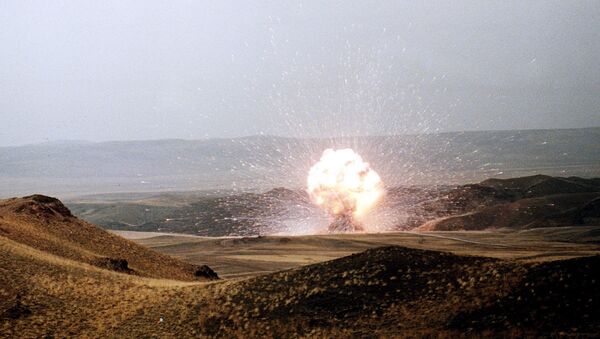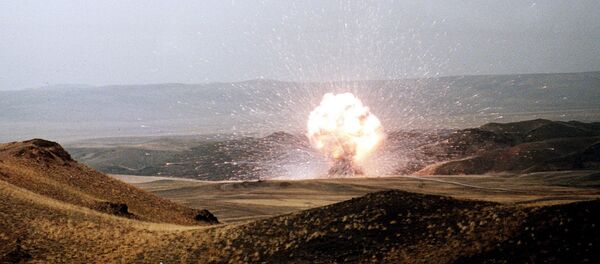- The INF Treaty, signed 31 years ago by President Ronald Reagan and General Secretary Mikhail Gorbachev, laid down the obligations of the Soviet Union and the United States in nuclear arms control and non-proliferation. The two superpowers vowed to get rid of all nuclear and conventional medium-range (1,000-5,000 km) and shorter-range (500-1,000 km) missiles and their launchers.
- According to the agreement, which became an unprecedented step in trimming nuclear arsenals for the turbulent Cold War era, the United States would destroy its intermediate-range missiles Pershing II and the BGM-109G as well as the shorter-range Pershing IA.
- The USSR bound itself to destroy its medium-range RSD-10 Pioneer, the R-12 and the R-14 (NATO designation SS-20, SS-4 and SS-5, respectively) and the land-based and submarine-launched RK-55 Relief. Additionally, the USSR would eliminate OKA ballistic missiles, whose range was shy of 500km and which therefore were not compatible with the original pact — something seen as an act of good will from Gorbachev.
- The three-year elimination period would be followed by 10 years of on-site verification inspections. The ban resulted in 2,692 missiles being destroyed by the treaty's deadline of June 1, 1991.
READ MORE: Lavrov: US Wants Russia to Ban Missile That Was Tested Within INF Framework
The treaty that was a massive step forward in United States-Soviet Union relations was dealt a huge blow in October, when Donald Trump announced that Washington would withdraw from the accord. Trump accused Russia of numerous violations of the pact, which Moscow denied.
This echoed previous claims from US intelligence officials that Russia's new ground-based cruise missile systems breach the INF Treaty because they give Russia the possibility of launching a nuclear strike in Europe with little or no notice.
The United States went on to set a 60-day deadline for Russia to comply with the nuclear treaty. However, Moscow accused Washington of cheating, particularly over the ground-based deployment of Aegis Ashore systems in Romania and Poland. Russia argued that anti-ballistic missiles in these systems can be replaced with medium-range Tomahawk missiles.
Russia also voiced concerns over America's armed drones, saying that their operational range of 1,100 km and lack of pilot liken them to intermediate-range missiles.



